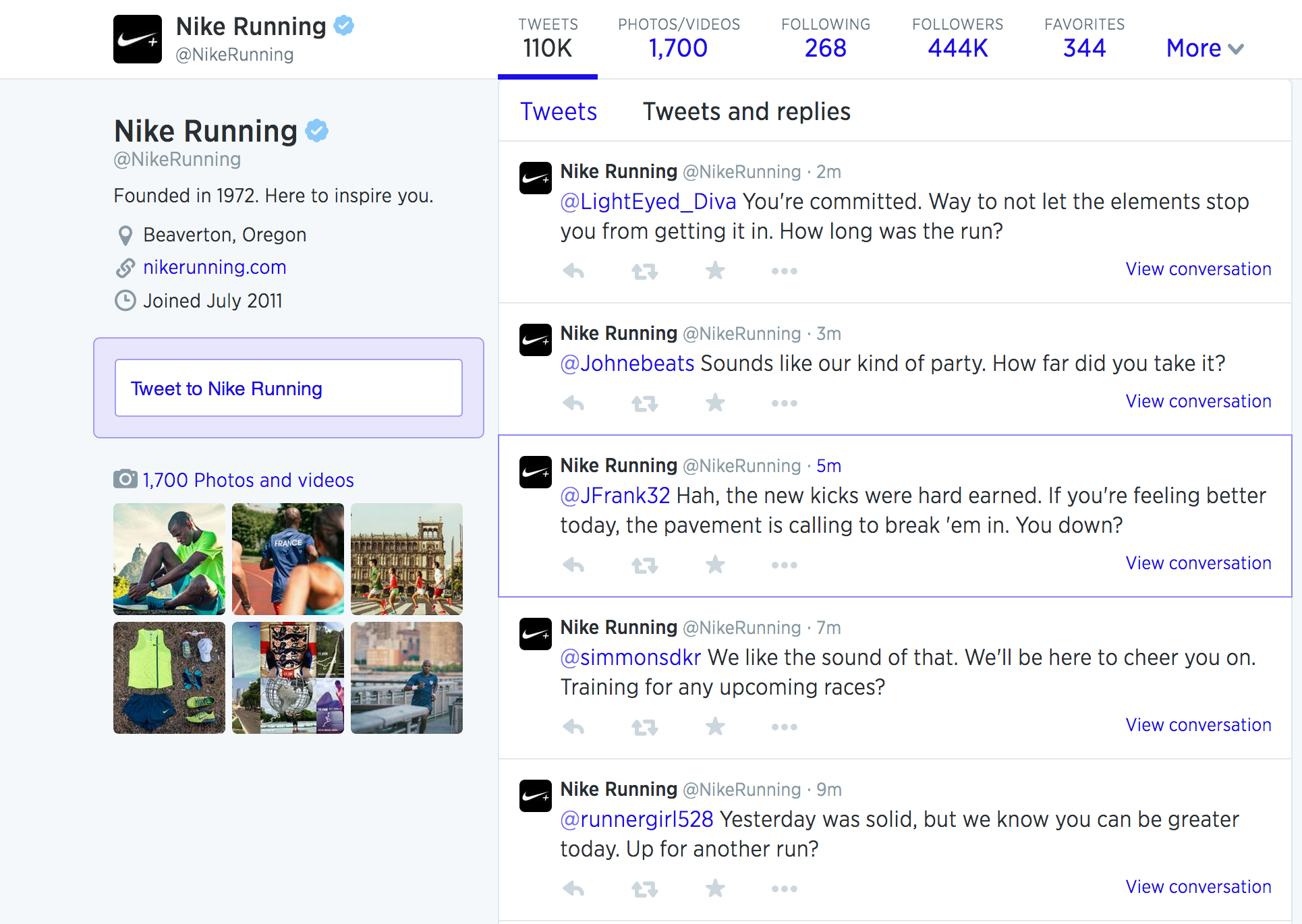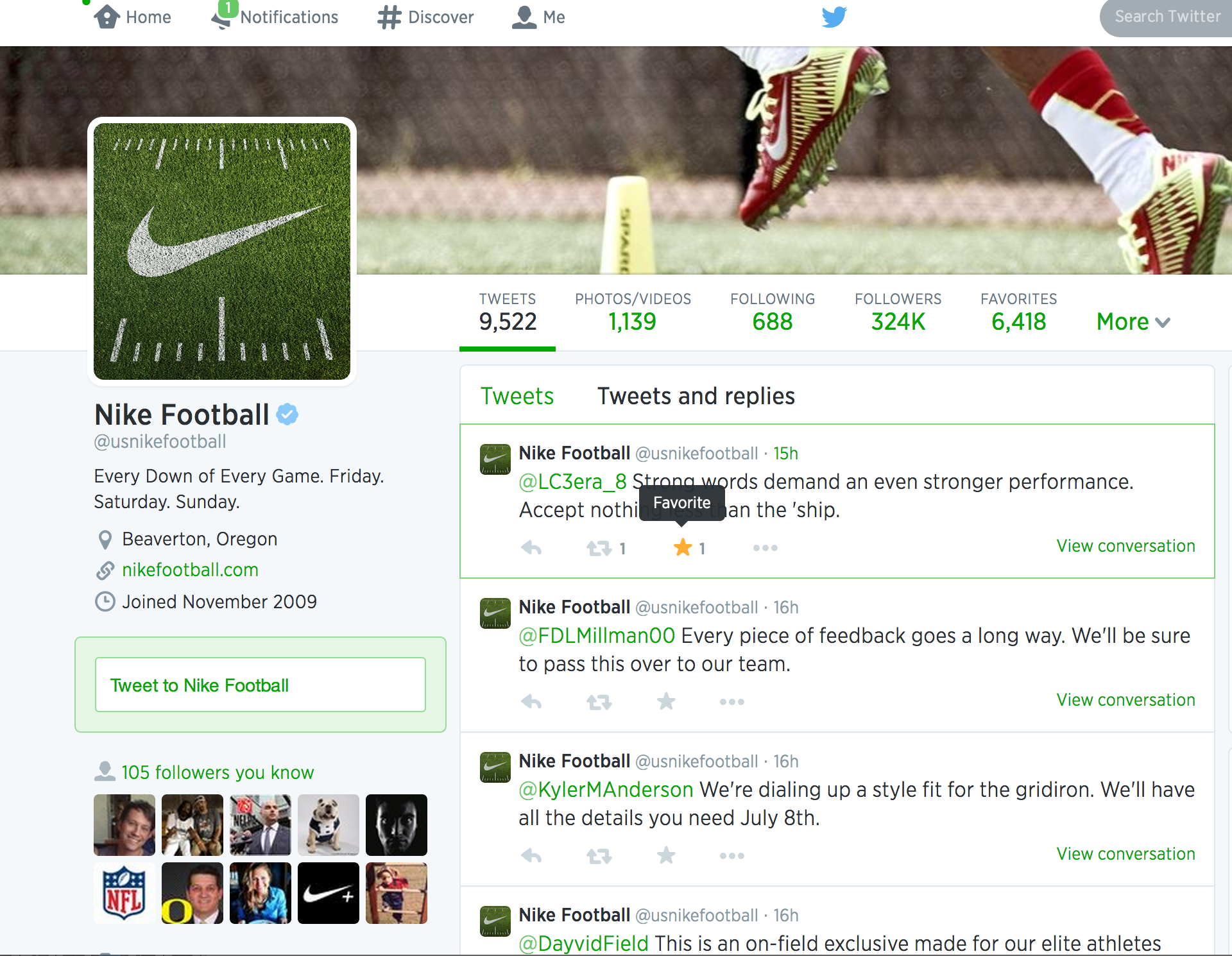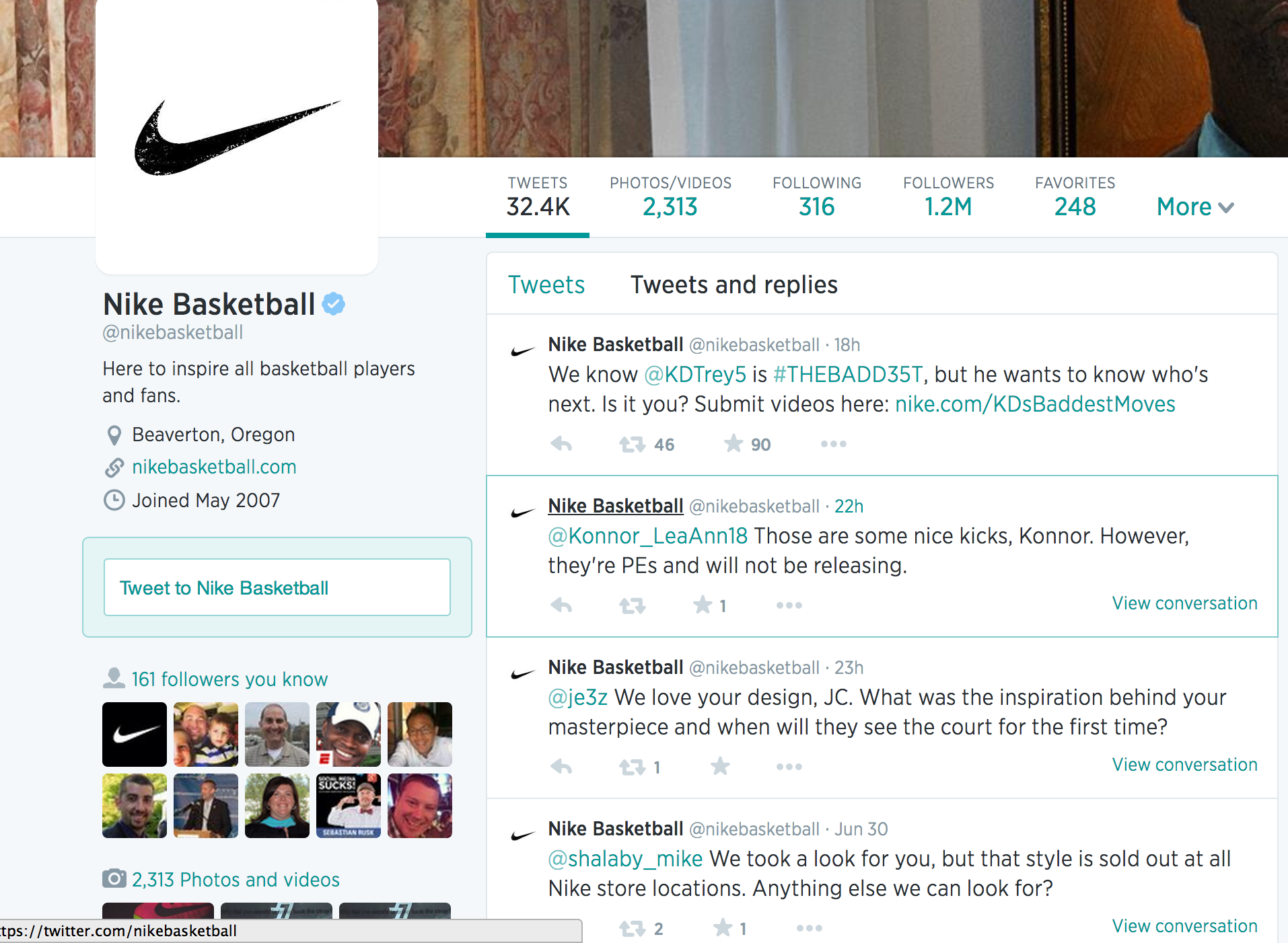Nike has dominated the World Cup from a brand perspective. Period. If you think this happened by chance, think again. Nike is a company that understands digital through and through. Just last week Nike CEO Mark Parker made some powerful comments during their earning’s call that reinforced this belief:
“An ongoing two-way dialogue with consumers is also a critical element of our digital ecosystem. It provides us insights that drive innovation, strengthens consumer connections to our brands, and provides a platform for consumers to interact with each other. Through our social media platforms, we leverage the power and passion of sport to deepen our relationship with our consumers.”
Nike doesn’t just “do it” when it comes to social and digital. They get it. They understand what companies need to invest in in order to make social and digital successful.
Teams, leagues and other brands in the sports industry may never have the budget of Nike, but these fundamental beliefs can still be emulated to some degree. In order to do social well, there are three things you should build your team and strategy around. You need to invest in:
Resources.
Nike has almost done away with traditional advertising, and instead, shifted their dollars to digital and social. No, that doesn’t mean their budget has shrunk, it just means they’ve rearranged where they spend:
As the company drops costs on TV and print advertising, (in the U.S. has dropped by 40% in just three years), the company total marketing budget has steadily climbed upward to hit a record $2.4 billion. (Source: 05/13)
Years ago Nike saw potential in the digital landscape. They saw it as an opportunity to tell their story on their own channels and connect with consumers like never before. They bought into the idea 100 percent and put the necessary resources behind it, from talented staff to budget. If you read through Parker’s comments last week, my guess is they would say it’s paid off.
Takeaway: As we all know, social media is not free. We need to stop the whining about lagging organic reach on Facebook and look at social media differently. As social media professionals, we need to have a vision about what social media can do for our team, league, company, etc. and articulate that so we get some dedicated dollars (at least) to help the vision come to life. Social media is an investment in resources to hire staff, create content, help the content spread, etc. One where we give, we receive.
Relationships.
Nike knows that the benefits of social media and digital extend far beyond the bottom line. One of those benefits is the ability to listen, connect and engage with consumers. As Parker said, “through our social media platforms, we leverage the power and passion of sport to deepen our relationship with our consumers.”
If you take a look at Nike’s social media platforms, you quickly see they are invested in their relationship with the consumer (they are constantly listening and engaging with them):
Takeaway: It’s simple. Take the time for your consumers and fans. Leverage the passion they have for your team, brand, etc. to strengthen your relationship with them. Remember that social media’s benefits extend far beyond the bottom line to include the ability to listen, connect and engage.
Storytellers.
For those of you that follow me on Twitter, you know I have a huge brand crush on Nike. Why? I appreciate their ability to tell a story. Nike is a company that is built by storytellers. Today, they proudly look to hire those who can tell a story, whether you work in social or product design.

Obviously, it’s worked. Nike has produced some of the most memorable ads of all time from Possibilities to Bo Knows. They’ve carried this ability to tell a story into their social channels, piecing together stellar content to paint a bigger picture.
Takeaway: In order to stand out from all the noise today, you need to have people on your staff that can tell a story. Social media and digital is about much more than the platforms—it’s about the ability to tug at consumers through meaningful and engaging content. It’s about telling it, not selling it. Keep that in mind as you build a team, vision and strategy.
While there are many, many other takeaways from Nike for us all, these three things stuck out to me with Parker’s recent comments. Here’s to being inspired by one of the world’s best brands in digital and social, and not just doing it, but doing it well.
0


What I like about Nike is that they don’t rush into social without a strategy. They didn’t even start their @nike twitter account until 2011, because they were testing what was effective with smaller accounts like Nike baseball and snowboarding.
A lot of brands like to proudly tell everyone that they are on the newest social network like snapchat without thinking how they will use it effectively longterm. Nike (rightly) doesn’t take that approach.
Love your point, Alan. I always like to say that the social media race is not won by the swift, but by the consistent, persistent and strategic ones. Thanks for reading!
Reblogged this on Straight Out Digital and commented:
A fantastic piece which illustrates why Nike is on top of their digital game. All brands not just sport should take note of what Nike does. Yes their budget is bigger, but so is their community. You would think that with such a big community the little things (Listen, acknowledge and respond) would get missed. This is not the case, in fact, it’s the opposite.